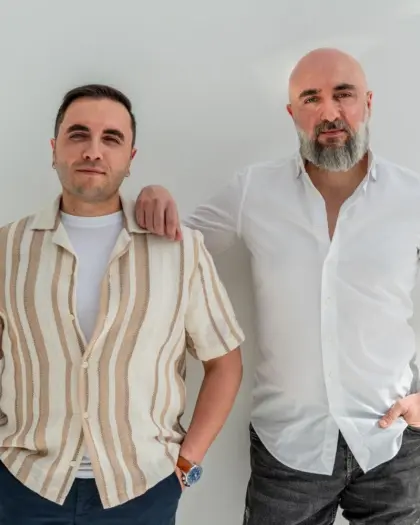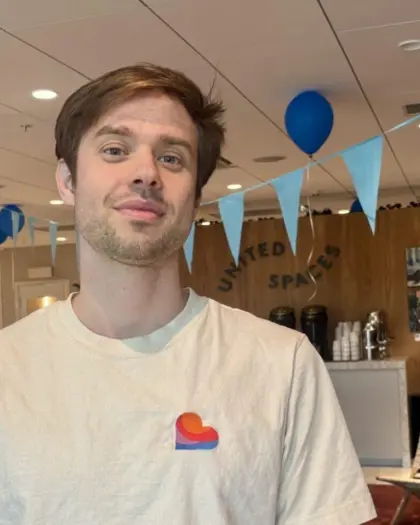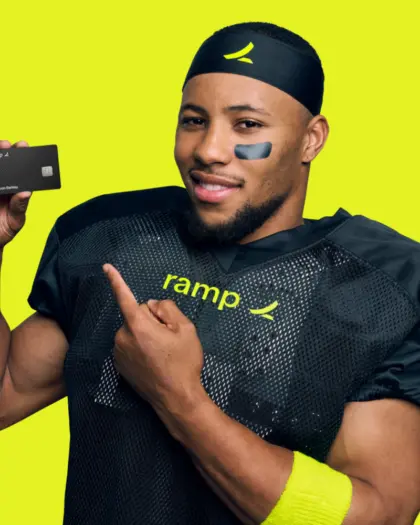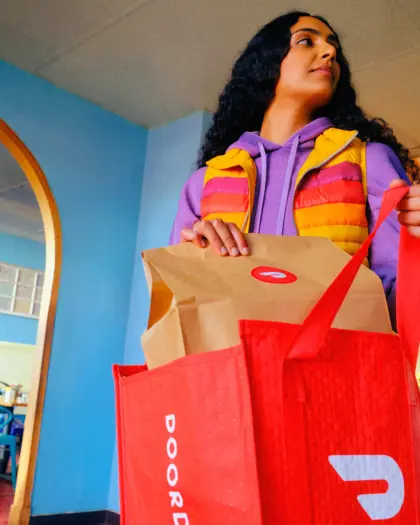Growthcurve has spent the best part of a decade advising brands and creators on how to succeed on YouTube. In that time, we've absorbed a number of insights that are both practical and proven to deliver results. Today, I want to share our approach to YouTube growth in a way that is clear, detailed, and worth bookmarking for future reference.
Your YouTube Audience Data
When we worked with a lifestyle vlogger recently, we noticed that her most successful uploads all featured a fun challenge element. Her audience loved sequences where she tried something unusual, like cooking a complicated meal in under ten minutes. To validate that, we looked at the exact watch-time graph. Viewers stuck around to see if she would succeed under pressure. This data taught us what her core audience craved, which then helped us shape future uploads with a similar “challenge” angle. A simple method like this - reviewing your best five or six videos - can reveal invaluable patterns. You might realise your audience loves travel guides, or they always tune in for day-in-the-life vlogs, or they click when you feature a bold statistic in the title.
Spotting Outliers - Identifying Your Best YouTube Content Formats
Once we know a channel’s high points, we look for ways to recreate them with fresh twists. We worked with a fitness channel that found a strong audience for “24-hour transformation” videos. Those uploads outperformed every other idea, so we adapted that theme multiple times. One version had the creator train like a pro boxer for a single day, while another had them follow the strict diet of an Olympian. Each video shared the same basic premise: a single-day transformation challenge. That sense of novelty kept viewers coming back, but the underlying concept was tested and proven. If you identify a format that resonates, do not hesitate to revisit it. Just change one or two key details - maybe the location, time frame, or outcome - so viewers stay engaged.
Borrow From Competitor YouTube Channels
Borrowing from competitors and adapting we keep an eye on other creators in the same niche. We look at videos that perform especially well for them, then we consider how to adapt those ideas for my clients. A tech reviewer might notice a competitor’s success with “Budget Laptop Speed Tests,” so they try “Budget Phone Speed Tests” and see if it resonates with their audience. One brand we advised created a spin on a popular real-estate video by adding an international twist. Rather than simply filming “What £200k Buys You in X,” they created “What £200k Buys You in 3 Different Countries.” That shift in scope immediately attracted more curiosity. You do not have to copy everything from someone else. Instead, study the structure that made their idea take off, then make it your own.
Testing Bold New Content Concepts
While it is crucial to build on proven concepts, we also encourage leaving space for entirely new ideas. I remember one YouTuber who approached Growthcurve with a wild notion... he wanted to host a game show in a public park at dawn, with random passersby as contestants. We were not sure if it would work, but we decided to try it. We included a small budget for props and had the final score appear overlaid in real time. It ended up going viral. That moment reminded me never to dismiss a bold, original concept. If you have an idea that feels off the beaten path, test it. Sometimes it becomes your signature series.
Optimising Your YouTube Video Intro
A strong intro can change the entire watch-time curve of a video. We often rewrite intros multiple times. For instance, we once worked with a travel channel whose first 30 seconds were mostly establishing shots of an airport. We replaced that with a direct hook. The creator said, “In the next ten hours, I plan to visit three cities in different countries, and here’s why I might miss my last flight.” That line raised questions: Which cities? Why might they miss the flight? The watch-time improved instantly. It shows how a single change in the opener can shift the momentum of the entire video. Do not fall into the trap of a slow hello or a drawn-out backstory. Give people the punchline right away so they want to see it unfold.
I often see intros that bury the most interesting info. A finance YouTuber might start a video by saying, “Today I want to chat about how anyone can earn extra income in a weekend.” That sounds fine, but we can be bolder. We can show a close-up shot of a real payment or direct profit proof, then say, “I earned £285 in one weekend by testing a brand-new side-hustle—let me show you how.” That extra specificity hooks viewers. Without those details, many potential watchers click away before they ever see the value. The biggest mistake is introducing the video as if you have ten minutes to ease your way in. On YouTube, you only have a few seconds.
YouTube Thumbnails and Titles
Thumbnails and titles that demand attention we frequently advise creators to use exact numbers or phrases that spark curiosity in both titles and thumbnails. For example, if you made £130,000 last year selling handmade products online, say so in the title rather than using a vague phrase like “I had a good sales year.” You could try “How I Made £130,000 in a Year Selling My Homemade Products” or “One Year, £130,000, and I Never Left My Kitchen.” You might also add a distinct brand element in the thumbnail, like a graphic chart or a recurring shape that viewers learn to associate with you. One client of mine, who focuses on productivity, started using a stylised green progress bar in every thumbnail. Over time, fans instantly recognised that bar before they even read the title.
Establishing a memorable visual identity People often underestimate how important brand identity is on YouTube. We encourage creators to find one or two visual elements that repeat in each thumbnail. It could be a specific font or a consistent background texture. You could also photograph yourself in the same style every time. We worked with a business vlogger who always wore a bright orange blazer in her thumbnails. Over a year, that blazer became synonymous with her channel. When new viewers came across her content on the recommended feed, they would see the orange blazer and instantly realise it was her. That boosted her clicks across multiple videos.
Using strong words that push curiosity we are always careful with the language in my titles. Words like “revealed,” “shattered,” or “broke” can make a concept feel bigger and more urgent. If you are talking about someone’s strategy, consider “How She Broke into a £500 Million Market” instead of “How She Entered a Big Market.” That difference may seem small, but it can drastically affect your click-through rate. I have seen it with creators who changed just one or two words and saw significant lifts in their overall reach.
Understanding Retention Data In YouTube Videos
Retention dips and how to manage them we spend a lot of time studying retention graphs. One client’s data showed that every time they talked about budgeting, the line on the graph dipped by roughly five percent. However, skipping budgeting tips altogether would have removed some of the channel’s real value. We decided to keep the budgeting content but repackage it visually to move faster and feel more interactive. That balanced approach let us retain most of the audience while still sharing what made the channel special. It is all about weighing the short-term drop against the long-term benefit.
Leveraging YouTube Shorts
Shorts as a test for big ideas I sometimes view short-form content as a laboratory for quick ideas. One cooking channel we worked with wanted to see if followers would enjoy a comedic twist on recipe tutorials. We tested the comedic approach by uploading 30-second Shorts where the host told jokes while mixing ingredients. Viewers loved it, and watch-time spiked even more on the comedic uploads than the usual ones. With that in mind, we developed a longer video that combined humoir and a full recipe. Testing in short form is an efficient way to avoid sinking too much effort into an unproven idea.
Crafting Engaging Corporate YouTube Channels
Corporate clients often ask how they can build a personality on YouTube without seeming forced. We recommend showcasing real employees. For instance, we helped a large tech firm develop “day-in-the-life” videos featuring software engineers. We kept the tone casual and included shots of their coffee breaks, chat sessions with colleagues, and small coding victories. That authenticity led to far more job applications than the client had expected. It also humanised the company for potential partners who wanted to see what went on behind the scenes. If you work for a big brand and struggle to seem approachable, letting employees “host” your content is a great start.
YouTube Income Streams
Creators often overlook some of YouTube’s best income streams. We encourage them to explore sponsored spots, affiliate sales, speaking engagements, and digital products. One travel YouTuber I know sells customised itineraries for small fees. Another finance guru launched a short e-book about saving money on groceries. Both are ways to monetise your expertise without relying solely on ad revenue. At Growthcurve we've also seen success with affiliate partnerships, like referencing a platform you genuinely use and then including a sign-up link. When that platform aligns with your audience’s interests, it can bring in solid recurring income.
Brand Deals On YouTube
Negotiating brand deals Many people ask how to price brand deals. We suggest you start with your channel’s average view count. If your videos routinely surpass 100,000 views, you might charge significantly more than someone averaging 10,000. That said, view count is not everything. A smaller channel with a very specific audience can often charge a premium. For instance, a niche channel with 25,000 engaged subscribers might be worth more to a brand that sells specialist hiking gear than a general “outdoors” channel with 200,000. Always present your channel’s unique data -like watch-time and audience demographics - during negotiations. The more you can show a brand why your viewers trust you, the more likely they are to pay a higher fee.
The Future of YouTube Content
The future of YouTube content I see YouTube heading toward more story-driven material. A simple tutorial can still perform well, but weaving in a personal narrative pushes engagement further. That might mean telling a short anecdote about the first time you tried a new skill, or showing your real frustrations during a project. When viewers see emotional stakes, they become more invested. At the same time, I notice an appetite for concise, data-heavy videos too. If you can combine storytelling with clear numerical evidence (e.g., “this approach raised my revenue by 22 percent last quarter”), you build both trust and entertainment.
2025 YouTube Growth Checklist
When I strip away all the extras, these core points stay the same:
- Know precisely who you want watching your content.
- Analyse your best videos and replicate that success.
- Borrow ideas from competitors, but adapt them in your own style.
- Leave room for out-of-the-box experiments.
- Write intros that grab attention fast - no fluff.
- Use concrete numbers in your titles, thumbnails, and early dialogue.
- Accept minor retention drops if they serve a bigger narrative.
- Try short-form content to validate new concepts.
- If you are a brand, feature real people with genuine stories.
- Diversify your revenue streams beyond ad money.
- Negotiate brand deals confidently by sharing your unique data.
- Blend emotional storytelling with hard metrics for maximum impact.
If you are serious about growing on YouTube, bookmark these tips. Revisit them whenever you are unsure about a thumbnail design, video title, or topic choice. We have relied on these same strategies while guiding established channels past the million-subscriber mark and helping small channels find their first thousand super-fans. Each point reflects what we have learned from hours of study, experience from real client scenarios, and yes, plenty of trial and error.
If you remember nothing else, remember to give them something worth clicking on, staying for, and ultimately recommending to friends. That, in the end, is the real secret to building a presence that lasts.















































